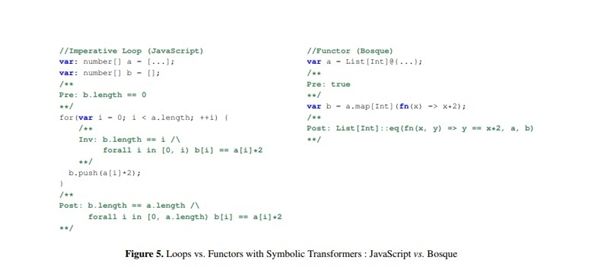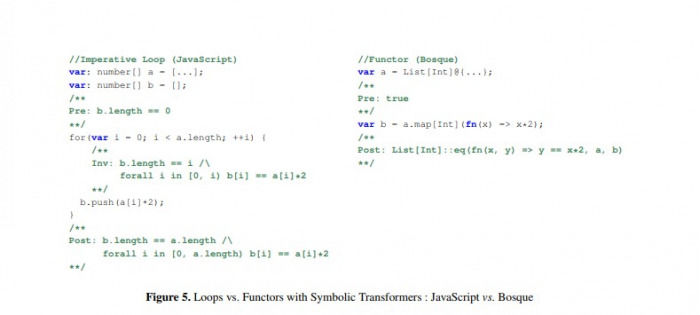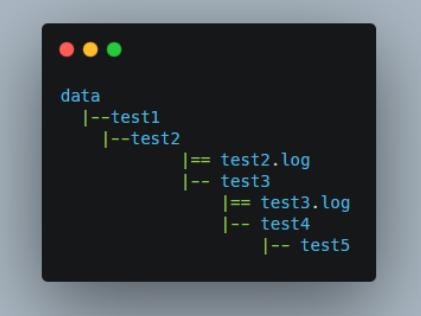Python中常用的魔法方法有哪些?
 发布于2023-04-30 阅读(0)
发布于2023-04-30 阅读(0)
扫一扫,手机访问
python中的魔法方法是一些可以让你对类添加“魔法”的特殊方法,它们经常是两个下划线包围来命名的。

Python的魔法方法,也称为dunder(双下划线)方法。大多数的时候,我们将它们用于简单的事情,例如构造函数(init)、字符串表示(str, repr)或算术运算符(add/mul)。其实还有许多你可能没有听说过的但是却很好用的方法,在这篇文章中,我们将整理这些魔法方法!
迭代器的大小
我们都知道__len__方法,可以用它在容器类上实现len()函数。但是,如果您想获取实现迭代器的类对象的长度怎么办?
it = iter(range(100)) print(it.__length_hint__()) # 100 next(it) print(it.__length_hint__()) # 99 a = [1, 2, 3, 4, 5] it = iter(a) print(it.__length_hint__()) # 5 next(it) print(it.__length_hint__()) # 4 a.append(6) print(it.__length_hint__()) # 5
你所需要做的就是实现__length_hint__方法,这个方法是迭代器上的内置方法(不是生成器),正如你上面看到的那样,并且还支持动态长度更改。但是,正如他的名字那样,这只是一个提示(hint),并不能保证完全准确:对于列表迭代器,可以得到准确的结果,但是对于其他迭代器则不确定。但是即使它不准确,它也可以帮我们获得需要的信息,正如PEP 424中解释的那样。
length_hint must return an integer (else a TypeError is raised) or NotImplemented, and is not required to be accurate. It may return a value that is either larger or smaller than the actual size of the container. A return value of NotImplemented indicates that there is no finite length estimate. It may not return a negative value (else a ValueError is raised).
元编程
大部分很少看到的神奇方法都与元编程有关,虽然元编程可能不是我们每天都需要使用的东西,但有一些方便的技巧可以使用它。
一个这样的技巧是使用__init_subclass__作为扩展基类功能的快捷方式,而不必处理元类:
class Pet: def __init_subclass__(cls, /, default_breed, **kwargs): super().__init_subclass__(**kwargs) cls.default_breed = default_breed class Dog(Pet, default_name="German Shepherd"): pass
上面的代码我们向基类添加关键字参数,该参数可以在定义子类时设置。在实际用例中可能会在想要处理提供的参数而不仅仅是赋值给属性的情况下使用此方法。
看起来非常晦涩并且很少会用到,但其实你可能已经遇到过很多次了,因为它一般都是在构建API时使用的,例如在SQLAlchemy或Flask Views中都使用到了。
另一个元类的神奇方法是__call__。这个方法允许自定义调用类实例时发生的事情:
class CallableClass:
def __call__(self, *args, **kwargs):
print("I was called!")
instance = CallableClass()
instance()
# I was called!可以用它来创建一个不能被调用的类:
class NoInstances(type):
def __call__(cls, *args, **kwargs):
raise TypeError("Can't create instance of this class")
class SomeClass(metaclass=NoInstances):
@staticmethod
def func(x):
print('A static method')
instance = SomeClass()
# TypeError: Can't create instance of this class对于只有静态方法的类,不需要创建类的实例就用到了这个方法。
另一个类似的场景是单例模式——一个类最多只能有一个实例:
class Singleton(type):
def __init__(cls, *args, **kwargs):
cls.__instance = None
super().__init__(*args, **kwargs)
def __call__(cls, *args, **kwargs):
if cls.__instance is None:
cls.__instance = super().__call__(*args, **kwargs)
return cls.__instance
else:
return cls.__instance
class Logger(metaclass=Singleton):
def __init__(self):
print("Creating global Logger instance")Singleton类拥有一个私有__instance——如果没有,它会被创建并赋值,如果它已经存在,它只会被返回。
假设有一个类,你想创建它的一个实例而不调用__init__。__new__ 方法可以帮助解决这个问题:
class Document: def __init__(self, text): self.text = text bare_document = Document.__new__(Document) print(bare_document.text) # AttributeError: 'Document' object has no attribute 'text' setattr(bare_document, "text", "Text of the document")
在某些情况下,我们可能需要绕过创建实例的通常过程,上面的代码演示了如何做到这一点。我们不调用Document(…),而是调用Document.__new__(Document),它创建一个裸实例,而不调用__init__。因此,实例的属性(在本例中为text)没有初始化,所欲我们需要额外使用setattr函数赋值(它也是一个魔法的方法__setattr__)。
为什么要这么做呢。因为我们可能会想要替代构造函数,比如:
class Document: def __init__(self, text): self.text = text @classmethod def from_file(cls, file): # Alternative constructor d = cls.__new__(cls) # Do stuff... return d
这里定义from_file方法,它作为构造函数,首先使用__new__创建实例,然后在不调用__init__的情况下配置它。
下一个与元编程相关的神奇方法是__getattr__。当普通属性访问失败时调用此方法。这可以用来将对缺失方法的访问/调用委托给另一个类:
class String:
def __init__(self, value):
self._value = str(value)
def custom_operation(self):
pass
def __getattr__(self, name):
return getattr(self._value, name)
s = String("some text")
s.custom_operation() # Calls String.custom_operation()
print(s.split()) # Calls String.__getattr__("split") and delegates to str.split
# ['some', 'text']
print("some text" + "more text")
# ... works
print(s + "more text")
# TypeError: unsupported operand type(s) for +: 'String' and 'str'我们想为类添加一些额外的函数(如上面的custom_operation)定义string的自定义实现。但是我们并不想重新实现每一个字符串方法,比如split、join、capitalize等等。这里我们就可以使用__getattr__来调用这些现有的字符串方法。
虽然这适用于普通方法,但请注意,在上面的示例中,魔法方法__add__(提供的连接等操作)没有得到委托。所以,如果我们想让它们也能正常工作,就必须重新实现它们。
自省(introspection)
最后一个与元编程相关的方法是__getattribute__。它一个看起来非常类似于前面的__getattr__,但是他们有一个细微的区别,__getattr__只在属性查找失败时被调用,而__getattribute__是在尝试属性查找之前被调用。
所以可以使用__getattribute__来控制对属性的访问,或者你可以创建一个装饰器来记录每次访问实例属性的尝试:
def logger(cls):
original_getattribute = cls.__getattribute__
def getattribute(self, name):
print(f"Getting: '{name}'")
return original_getattribute(self, name)
cls.__getattribute__ = getattribute
return cls
@logger
class SomeClass:
def __init__(self, attr):
self.attr = attr
def func(self):
...
instance = SomeClass("value")
instance.attr
# Getting: 'attr'
instance.func()
# Getting: 'func'装饰器函数logger 首先记录它所装饰的类的原始__getattribute__方法。然后将其替换为自定义方法,该方法在调用原始的__getattribute__方法之前记录了被访问属性的名称。
魔法属性
到目前为止,我们只讨论了魔法方法,但在Python中也有相当多的魔法变量/属性。其中一个是__all__:
# some_module/__init__.py __all__ = ["func", "some_var"] some_var = "data" some_other_var = "more data" def func(): return "hello" # ----------- from some_module import * print(some_var) # "data" print(func()) # "hello" print(some_other_var) # Exception, "some_other_var" is not exported by the module
这个属性可用于定义从模块导出哪些变量和函数。我们创建了一个Python模块…/some_module/单独文件(__init__.py)。在这个文件中定义了2个变量和一个函数,只导出其中的2个(func和some_var)。如果我们尝试在其他Python程序中导入some_module的内容,我们只能得到2个内容。
但是要注意,__all__变量只影响上面所示的* import,我们仍然可以使用显式的名称导入函数和变量,比如import some_other_var from some_module。
另一个常见的双下划线变量(模块属性)是__file__。这个变量标识了访问它的文件的路径:
from pathlib import Path print(__file__) print(Path(__file__).resolve()) # /home/.../directory/examples.py # Or the old way: import os print(os.path.dirname(os.path.abspath(__file__))) # /home/.../directory/
这样我们就可以结合__all__和__file__,可以在一个文件夹中加载所有模块:
# Directory structure:
# .
# |____some_dir
# |____module_three.py
# |____module_two.py
# |____module_one.py
from pathlib import Path, PurePath
modules = list(Path(__file__).parent.glob("*.py"))
print([PurePath(f).stem for f in modules if f.is_file() and not f.name == "__init__.py"])
# ['module_one', 'module_two', 'module_three']最后一个我重要的属性是的是__debug__。它可以用于调试,但更具体地说,它可以用于更好地控制断言:
# example.py
def func():
if __debug__:
print("debugging logs")
# Do stuff...
func()如果我们使用python example.py正常运行这段代码,我们将看到打印出“调试日志”,但是如果我们使用python -O example.py,优化标志(-O)将把__debug__设置为false并删除调试消息。因此,如果在生产环境中使用-O运行代码,就不必担心调试过程中被遗忘的打印调用,因为它们都不会显示。
创建自己魔法方法?
我们可以创建自己的方法和属性吗?是的,你可以,但你不应该这么做。
双下划线名称是为Python语言的未来扩展保留的,不应该用于自己的代码。如果你决定在你的代码中使用这样的名称,那么将来如果它们被添加到Python解释器中,这就与你的代码不兼容了。所以对于这些方法,我们只要记住和使用就好了。
产品推荐
-

售后无忧
立即购买>- DAEMON Tools Lite 10【序列号终身授权 + 中文版 + Win】
-
¥150.00
office旗舰店
-

售后无忧
立即购买>- DAEMON Tools Ultra 5【序列号终身授权 + 中文版 + Win】
-
¥198.00
office旗舰店
-

售后无忧
立即购买>- DAEMON Tools Pro 8【序列号终身授权 + 中文版 + Win】
-
¥189.00
office旗舰店
-

售后无忧
立即购买>- CorelDRAW X8 简体中文【标准版 + Win】
-
¥1788.00
office旗舰店
-
正版软件
- 应用Golang进行区块链开发
- Golang在区块链开发中的应用区块链技术作为一种分布式数据库技术,已经被广泛应用在金融、医疗、物流等领域。而在区块链开发中,Golang作为一种高效、简洁的编程语言,也越来越受到开发者的青睐。本文将探讨Golang在区块链开发中的应用,以及具体的代码示例。一、Golang在区块链开发中的优势高效性:Golang是一种编译型语言,具有快速的编译和执行速度,适
- 8分钟前 开发 区块链 Golang 0
-
正版软件
- 正确在PHP Dompdf中渲染中文字符
- 如何在PHPDompdf中正确显示中文字符在使用PHPDompdf生成PDF文件时,遇到中文字符显示乱码的问题是一个常见的挑战。这是因为Dompdf默认使用的字体库中不包含中文字符集。为了正确显示中文字符,我们需要手动设置Dompdf的字体,并确保选择支持中文字符的字体。以下是一些具体的步骤和代码示例来解决这个问题:第一步:下载中文字体文件首先,我们需要
- 13分钟前 中文 PHP DOMPDF 0
-
正版软件
- 开发手游的技术实现及挑战:Golang应用
- Golang手游开发:技术实现与挑战近年来,随着智能手机的普及和移动互联网的发展,手游市场正在迅速增长。越来越多的开发者开始关注使用Golang语言进行手游开发,因为Golang具有高效、快速和可靠的特点,适合处理实时性较强的游戏逻辑。本文将探讨使用Golang进行手游开发的技术实现及所面临的挑战,并提供一些具体的代码示例。一、技术实现游戏引擎选择在使用Go
- 28分钟前 Golang 技术实现 手游开发 0
-
正版软件
- 深入探讨PHP静态化技术
- 深入了解PHP静态化技术,需要具体代码示例随着互联网技术的不断发展,网站性能优化成为了开发人员和站长们关注的焦点之一。在优化网站性能的过程中,静态化技术备受推崇,其中PHP静态化技术被广泛应用。本文将深入探讨PHP静态化技术的原理及具体实现方法,并给出一些代码示例,帮助读者更好地理解和应用该技术。一、PHP静态化技术的原理PHP静态化技术是指将动态生成的页面
- 43分钟前 技术 PHP 静态化 0
-
正版软件
- PHP中静态方法与抽象方法的特性和用法深度剖析
- PHP中静态方法与抽象方法的特性和用法在PHP编程中,静态方法和抽象方法是两种不同的方法类型,它们在面向对象编程中发挥着重要的作用。本文将探究PHP中静态方法与抽象方法的特性和用法,并提供具体的代码示例。一、静态方法的特性和用法静态方法的特性静态方法是指在类中定义的可以直接通过类名调用的方法,而不需要创建类的实例。其特点包括:可以通过类名直接调用,不需要实例
- 58分钟前 PHP 静态方法 PHP 抽象方法 特性用法 0
最新发布
-
 1
1
-
 2
2
-
3
- Vue组件中如何处理图片预览和缩放问题
- 459天前
-
 4
4
-
 5
5
-
 6
6
- Python实战教程:批量转换多种音乐格式
- 630天前
-
7
- WebSocket协议的优势与劣势分析
- 460天前
-
8
- java动态代理实例代码分析
- 630天前
-
 9
9
- java io文件操作删除文件或文件夹的方法
- 627天前
相关推荐
热门关注
-

- Xshell 6 简体中文
- ¥899.00-¥1149.00
-

- DaVinci Resolve Studio 16 简体中文
- ¥2550.00-¥2550.00
-

- Camtasia 2019 简体中文
- ¥689.00-¥689.00
-

- Luminar 3 简体中文
- ¥288.00-¥288.00
-

- Apowersoft 录屏王 简体中文
- ¥129.00-¥339.00